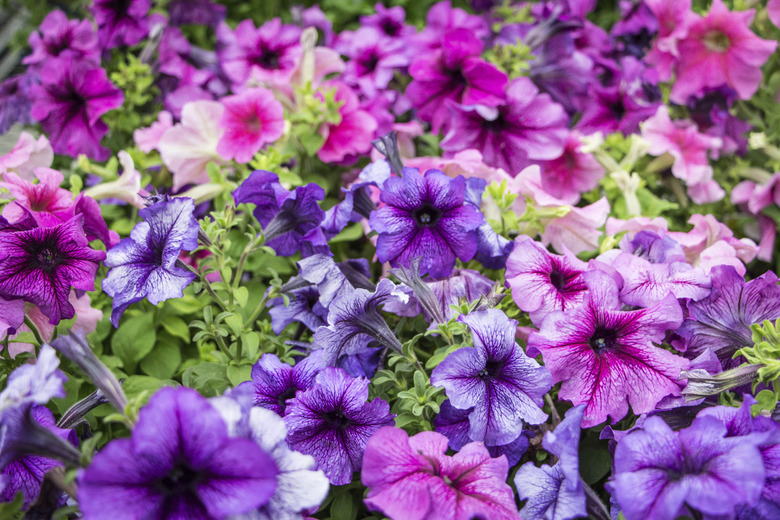Do I Have To Worry About My Petunias, Pansies, And Geraniums Freezing At 32 Degrees?
We may receive a commission on purchases made from links.
Half-hardy annuals, including petunias (Petunia x hybrida, USDA zones 10-11) and geraniums (Pelargonium x hybridum, zones 10-11), and biennial pansies (Viola x wittrockiana, zones 6-10) usually won't be adversely affected by a temperature of 32 degrees Fahrenheit. But that can depend on when they are exposed to it.
Plants that have experienced a gradual cooling in fall can survive freezing better than those just planted in spring, which lack such "hardening." Still, you should protect your plants from frost, covering annuals you wish to save whenever frost is forecast, as the meteorologist isn't always right about how low the temperature will go.
Tip
Pansies can survive a light freeze or frost, but petunias and geraniums should be protected with row covers or planted in containers and brought inside.
Protecting Petunias From Frost
Protecting Petunias From Frost
Petunias can potentially be perennial in U.S. Department of Agriculture plant hardiness zones 10 and 11. Elsewhere they are considered half-hardy annuals, which means they will survive light frosts but not heavy ones. A light freeze as one caused by temperatures between 29 and 32 F.
Because the weather frequently warms into Indian summer after a harsher frost, you may be able to keep your petunias blooming until late fall simply by covering them whenever the temperature threatens to drop below 29 F.
Cold-Tolerant Pansies
Cold-Tolerant Pansies
Pansies, which are hardy biennials in USDA zones 6 through 10, may droop and change color after a hard freeze — temperatures below 25 F — but that doesn't mean they are dying. Hardier than plants from tropical regions, they can survive around 10 F. It's a good idea to cover pansies with straw or pine straw whenever forecasts call for temperatures below 20 F, as frozen roots may cause them to die of thirst.
Keeping Geraniums Alive
Keeping Geraniums Alive
Like petunias, geraniums — potentially perennials in USDA zones 10 through 11 — are likely to come through a light frost unscathed. Those with thick stems probably will survive a moderate freeze, with temperatures from 25 to 28 F, though it is likely to shrivel their flowers and leaves. Temperatures below 25 F will kill stem tissue too, so — with the exception of a few of the more obscure species — geraniums usually won't survive a hard freeze. If you intend to use yours as winter houseplants, avoid damage by moving or covering them whenever temperatures are slated to fall below 29 F.
Protecting Geraniums and Petunias
Protecting Geraniums and Petunias
If your petunias or geraniums are growing in containers when frost threatens, move those containers to a roofed and warmer spot, such as a garage or porch, temporarily. Plants in the ground can be protected with porous "caps" such as large clay flower pots, tented newspapers and cardboard boxes.
If you have row or frost covers, you can lay them over the plants, but sheets or lightweight blankets generally will work as well. For a light frost, you can toss one of those coverings over the plants. If a moderate to hard freeze is predicted, use stakes to suspend the covering above the plants so it surrounds them on all sides without actually touching them.
